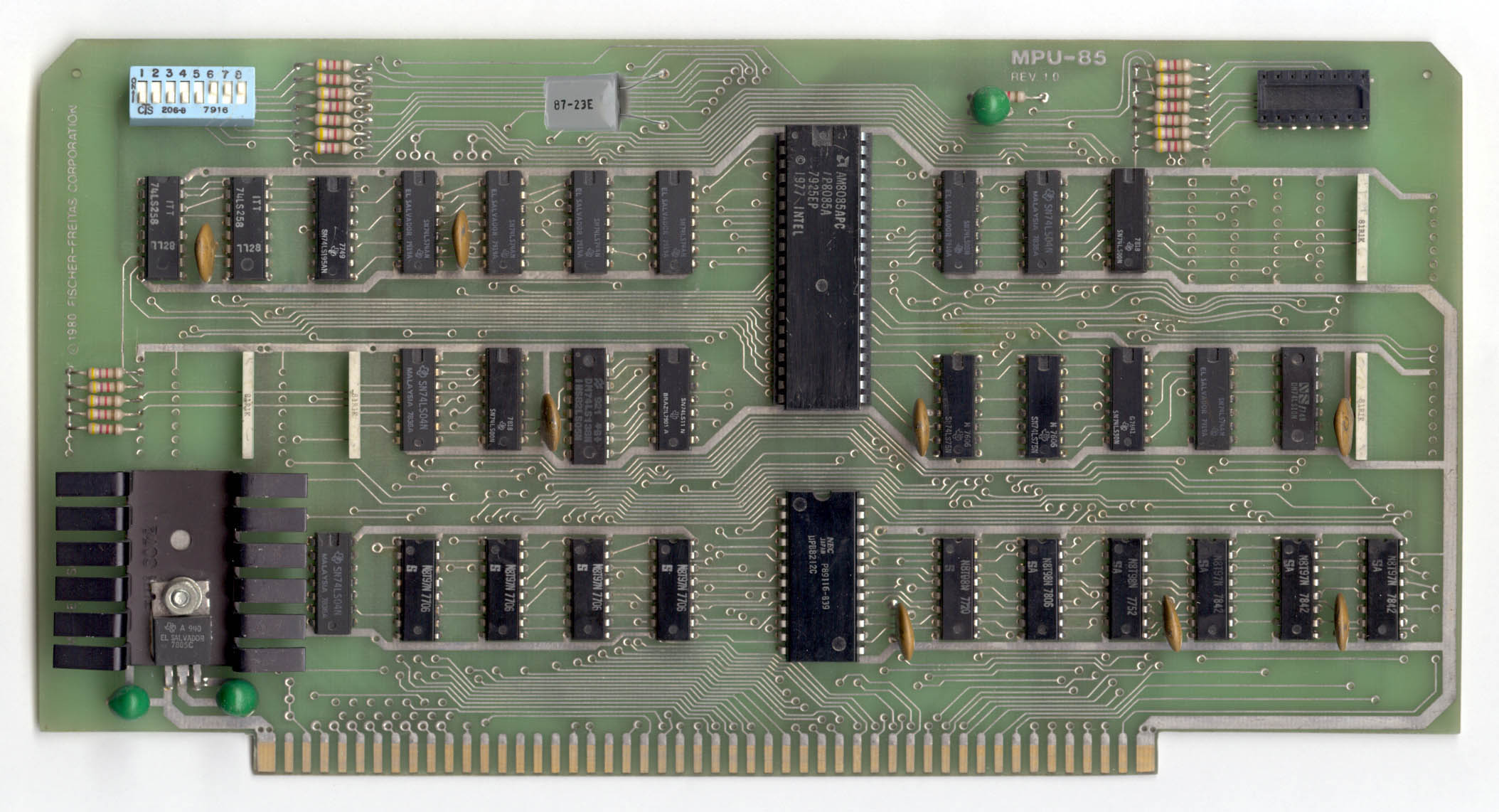IMSAI MPU-85


Introduction by Robert Weatherford
The IMSAI MPU-85 was the brainchild of Thomas “Todd” Fischer,
who purchased the rights to the IMSAI trademarks when IMSAI went out of business in 1979.
Todd wanted a simple 8085 processor board that was completely interchangeable with the 8080-based MPU-A.
To the best of my recollection, his requirements were:
- It had to the simplistic look of the MPU-A. No 20-pin parts.
- No programmed parts such as EPROMs, PROMs, or PALs.
- It must have a DIP switch selectable power-on-jump.
- It had to work with the CP-A (front panel).
- It had to work with the PIC-8. The MPU-B would not.
- It had to work with the rest of the existing IMSAI product line.
I was quick to let him know that yes, I could do this. I had just moved to Dallas from the San Francisco Bay Area to start a new career at Mostek.
I could not resist the opportunity to do another S-100 project!
I am going to jump to the end of this story now, and then circle back to fill in a few details.
In short, the project was a failure. It was the second-biggest fail in my career
(I will provide a link here to the #1 fail in due time).
I built a wire-wrap prototype and tested it on my own system, but I had no PIC-8 nor front panel to test with.
I incorrectly assumed that I had done enough timing analysis that the risk was small.
I was paid for the project and Todd got nothing useful in return. I still feel badly about that.
So why did it fail? Many reasons, overly-ambitious design, not enough testing, and physical separation between contractor and owner.
I think the best way to know for sure is to design its successor. That is what I’m planning on doing.
While I can never repay Todd for the lost opportunity cost, the least I can do is to direct all net profits from the sale of
the successor board to his new company, the Thomas Fischer Company.
To make this a more likely success, I am going to tweak the original requirements as follows:
- Use any size DIP parts to make more room on the board for new add-on features.
- Make the board configurable to be fully IEEE 696-compliant. It is MPU-A compliant by default.
- Make the power-on-jump a full 24-bits (16-bits for the basic board).
Many controller board’s boot entry point is not on a page boundary (such as the VIO monitor at F806.
- Replace the 2MHz clock generator with a dedicated oscillator in place of the jumper area 1
(selectable divide-by 1, 1.5, 2, 2.5) to allow complete freedom to choose an overclock 8085A crystal.
Saves power and space at the same cost.
- Generate the sSTACK signal in addition to pINTE.
May optionally assign to a IEEE 696 RFU pin because IEE 696 reassigned sSTACK to be ERROR*.
This is mostly for lighting up the STACK LED in the front panel.
Once upon a time, Intel must have imagined a separate memory pool for the stack.
In addition to the basic board features, there will be an add-on feature:
- Add an extended addressing bank-switcher to fully address up to 16 megabytes.
To support the bank switcher, a fully-sourced CP/M 3 MOVE module is supplied to get your system up and running with all the RAM your system has.
|